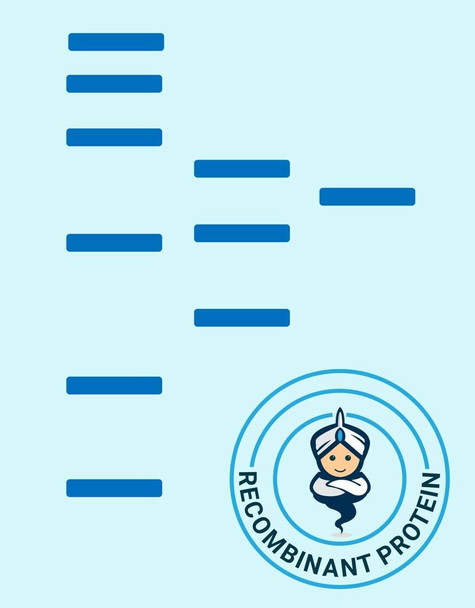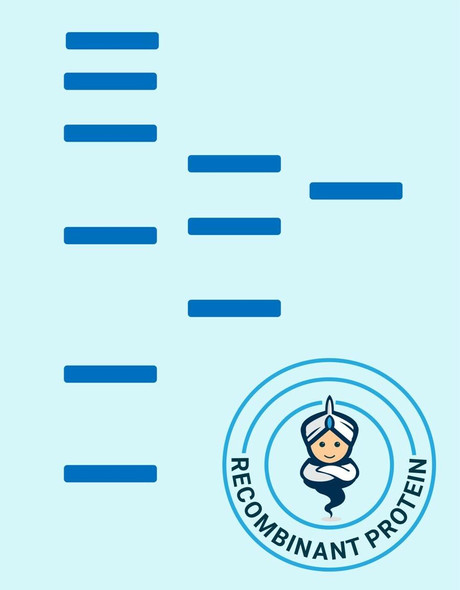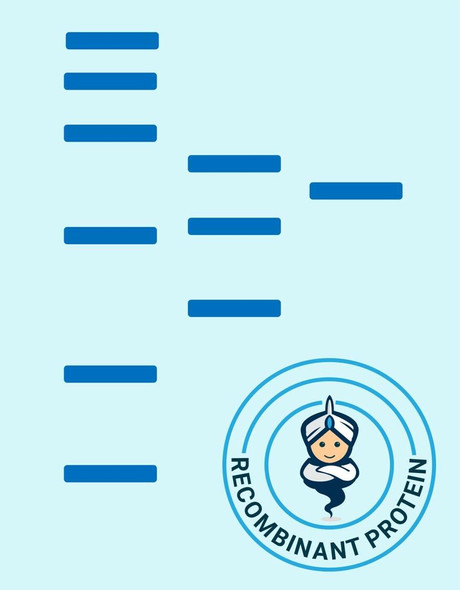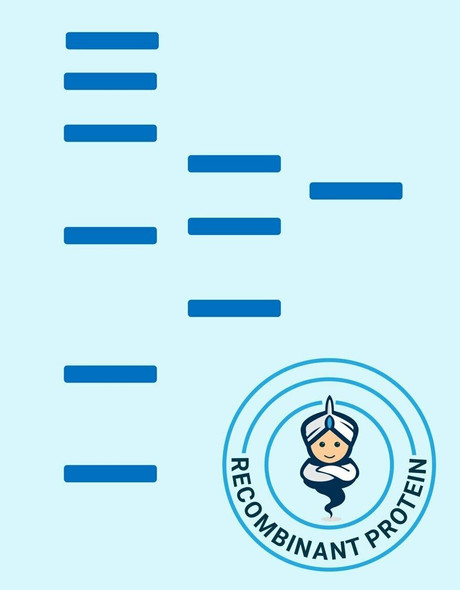Rat S100G Recombinant Protein (RPPB4575)
- SKU:
- RPPB4575
- Product type:
- Recombinant Protein
- Size:
- 5ug
- Species:
- Rat
- Target:
- S100G
- Synonyms:
- Protein S100-G
- S100 calcium-binding protein G
- Vitamin D-dependent calcium-binding protein intestinal
- CABP
- Source:
- Escherichia Coli
- Uniprot:
- P02634
Frequently bought together:
Description
| Product Name: | Rat S100G Recombinant Protein |
| Product Code: | RPPB4575 |
| Size: | 5µg |
| Species: | Rat |
| Target: | S100G |
| Synonyms: | Protein S100-G, S100 calcium-binding protein G, Vitamin D-dependent calcium-binding protein intestinal, CABP, Calbindin-D9k, 9 kDa CaBP, Cholecalcin, S100g, Calb3, S100d, Cbpi, MGC72928, Rncalbd9. |
| Source: | Escherichia Coli |
| Physical Appearance: | Sterile Filtered White lyophilized (freeze-dried) powder. |
| Formulation: | The protein was lyophilized from a concentrated solution (1mg/ml) containing 100mM Phosphate buffer, pH 7.3. |
| Solubility: | It is recommended to reconstitute the lyophilized CABP9K in sterile 18M?-cm H2O not less than 100µg/ml, which can then be further diluted to other aqueous solutions. |
| Stability: | Lyophilized CABP9K although stable at room temperature for 3 weeks, should be stored desiccated below -18°C. Upon reconstitution CABP9K should be stored at 4°C between 2-7 days and for future use below -18°C. For long term storage it is recommended to add a carrier protein (0.1% HSA or BSA).Please prevent freeze-thaw cycles. |
| Purity: | Greater than 90% as determined by SDS-PAGE. |
Calretinin is an intracellular calcium-binding protein belonging to the troponin C superfamily characterized by a structural motif described as the EF-hand domain. The immunohistochemical detection of calretinin in developing cerebellum is restricted to the later stages indicated by weak staining from week 21 of gestation, in Purkinje and basket cells and in neurons of the dentate nucleus. The intensity of staining increases as the cerebellum matures. In tumors, calretinin has been detected in mesotheliomas and some pulmonary adenocarcinomas.
CaBP9K is expressed with a -6xHis tag and purified by proprietary chromatographic techniques.
| UniProt Protein Function: | S100G: calbindin D9K, a vitamin D-dependent calcium-binding protein. This cytosolic protein belongs to a family of calcium-binding proteins that includes calmodulin, parvalbumin, troponin C, and S100 protein. In the intestine, the protein is vitamin D-dependent and its expression correlates with calcium transport activity. The protein may increase Ca2+ absorption by buffering Ca2+ in the cytoplasm and increase ATP-dependent Ca2+ transport in duodenal basolateral membrane vesicles. [provided by RefSeq, Jul 2008]Cellular Component: basolateral plasma membrane; apical plasma membraneMolecular Function: vitamin D binding; calcium ion binding |
| UniProt Protein Details: | |
| NCBI Summary: | calcium-binding protein that may be involved in intestinal calcium regulation; transcriptionally activated by 1,25-dihydroxyvitamin D3 [RGD, Feb 2006] |
| UniProt Code: | P02634 |
| NCBI GenInfo Identifier: | 6978609 |
| NCBI Gene ID: | 24249 |
| NCBI Accession: | NP_036653.1 |
| UniProt Secondary Accession: | P02634,P51964 |
| UniProt Related Accession: | P02634 |
| Molecular Weight: | 9,038 Da |
| NCBI Full Name: | protein S100-G |
| NCBI Synonym Full Names: | S100 calcium binding protein G |
| NCBI Official Symbol: | S100g |
| NCBI Official Synonym Symbols: | Cabp; Cbpi; Calb3; Rncalbd9 |
| NCBI Protein Information: | protein S100-G; 9 kDa CaBP; S100 calcium-binding protein G; calbindin 3, (vitamin D-dependent calcium binding protein); calbindin-D9K; calcium-binding protein, intestinal, vitamin D-dependent (9-kDa CaBP); cholecalcin; vitamin D-dependent calcium-binding protein, intestinal |
| UniProt Protein Name: | Protein S100-G |
| UniProt Synonym Protein Names: | 9 kDa CaBP; Calbindin-D9k; Cholecalcin; S100 calcium-binding protein G; Vitamin D-dependent calcium-binding protein, intestinal; CABP |
| Protein Family: | Protein |
| UniProt Gene Name: | S100g |
| UniProt Entry Name: | S100G_RAT |










